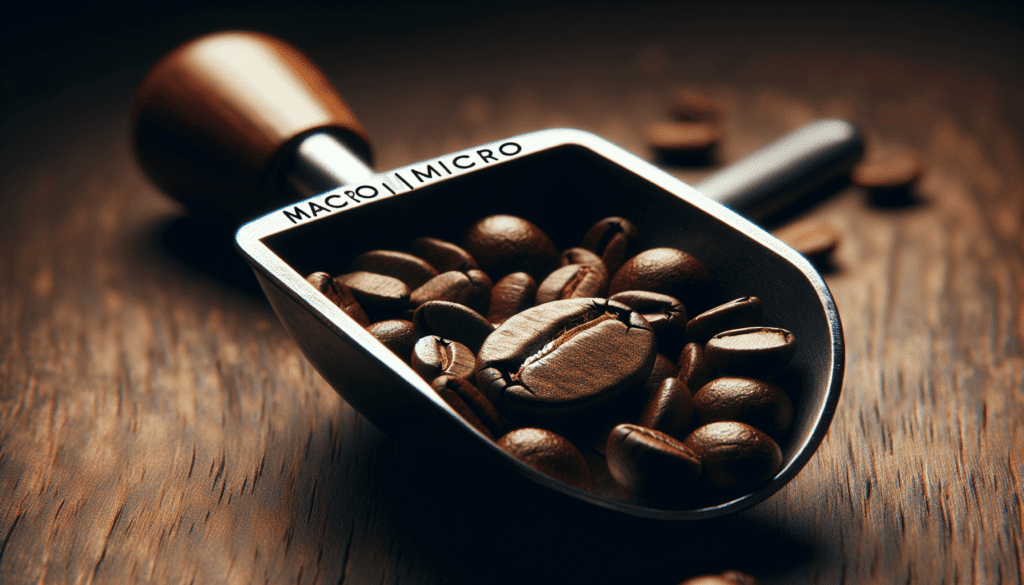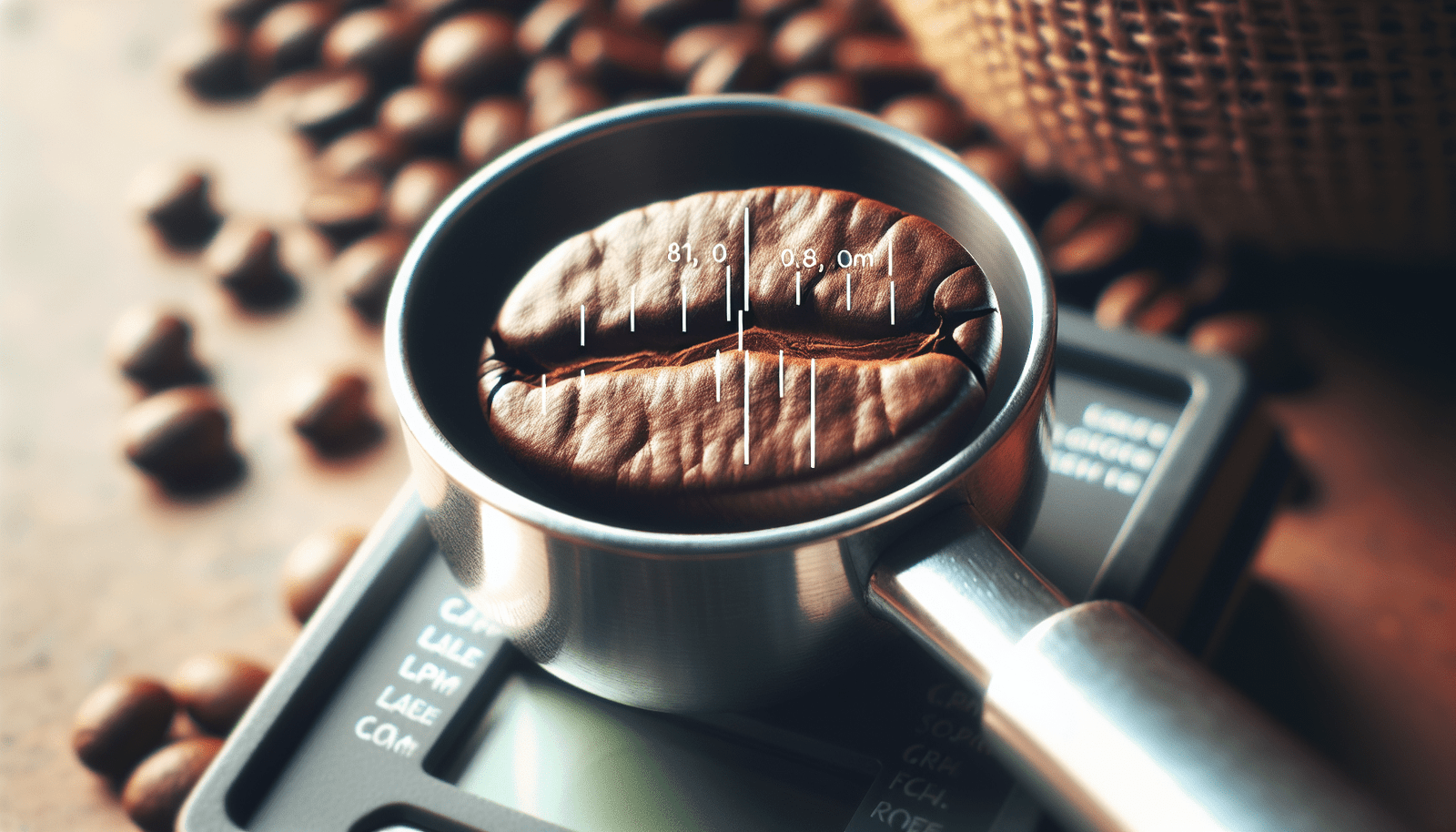Are you curious about how many coffee beans you should use per cup? Coffee beans are the essence of the caffeinated world, offering a vast array of flavors and options. Whether you’re brewing espresso or indulging in flavored coffee, understanding the quantity of coffee beans per cup is essential. From the origins of coffee beans to the art of roasting them at home, we’ll cover everything you need to know. And don’t worry, we’ll make sure you get the most out of your coffee beans, no matter your preferred brewing method. So, let’s embark on this coffee journey together and discover the perfect ratio of coffee beans for that delicious cup of joe.

Measuring Coffee Beans Per Cup
The Importance of Measuring
When it comes to brewing the perfect cup of coffee, measuring the right amount of coffee beans is essential. Accuracy in measuring ensures that you consistently achieve the desired flavor and strength in your cup. Without proper measurements, your coffee could end up too weak or too strong, and you might not fully enjoy the true flavors of the beans.
Factors Affecting the Number of Beans
The number of coffee beans needed per cup can vary depending on several factors. The most significant factors include the desired strength of your coffee, the type of coffee beans used, and the size of your coffee cup. Other factors such as grind size and brew method can also affect the number of beans required.
Different Methods of Measuring
There are various methods you can use to measure coffee beans per cup. The most common method is using a kitchen scale to weigh out the desired amount of beans. This method provides the most accurate measurement, especially if you want to be precise in your coffee brewing. Alternatively, you can also use a coffee scoop, which is a handy tool with a specific volume measurement. However, keep in mind that using a coffee scoop may not be as accurate as weighing the beans.
Understanding Coffee Bean Weight
Average Weight of Coffee Beans
Coffee beans come in different sizes and weights, depending on the variety and origin. On average, a single coffee bean weighs around 0.1 grams. Keep in mind that this is just an average, and the actual weight may vary slightly. Understanding the typical weight of coffee beans can help you estimate the number of beans needed for a cup.
Weight Loss During Roasting
It’s important to note that coffee beans lose weight during the roasting process. On average, coffee beans can lose up to 20% of their weight during roasting due to moisture evaporation. This means that you’ll need to take this weight loss into account when measuring your beans for a cup of coffee.
Calculating Beans Needed per Cup
To calculate the number of coffee beans needed per cup, you need to consider both the desired strength of your coffee and the weight loss during roasting. As a general guideline, a ratio of 1:16 is often recommended, which means using 1 gram of coffee for every 16 grams of water. By applying this ratio, you can easily calculate the number of beans needed based on the weight of your cup of water and the average weight of the beans.
Coffee Beans and Cup Size
Standard Cup Size
When it comes to coffee brewing, cup size plays a crucial role in determining the number of coffee beans needed. A standard cup size is generally considered to be 8 fluid ounces or approximately 237 milliliters. However, keep in mind that cup sizes can vary depending on the coffee mug or machine you use. It’s always a good idea to measure your cup’s actual size using a measuring cup or a scale for more accurate results.
Adjusting Beans for Different Cups
If you’re using a larger or smaller cup than the standard size, you’ll need to adjust the number of coffee beans accordingly. To maintain the desired strength and flavor, you can use the same coffee-to-water ratio mentioned earlier, but calculate it based on the weight of the water in your specific cup. This ensures that you consistently achieve the perfect cup of coffee regardless of the cup size you’re using.
Experimenting with Coffee Strength
Determining Your Preferred Strength
Coffee strength is a matter of personal preference. Some people prefer a bold and intense flavor, while others enjoy a milder and lighter cup. To determine your preferred strength, it’s recommended to experiment and adjust the amount of coffee beans used per cup. Start with the general ratio of 1 gram of coffee per 16 grams of water and then increase or decrease the amount of coffee according to your taste preferences.
Adjusting the Number of Beans
If you find that your coffee is too weak, you can increase the amount of coffee beans per cup. Conversely, if your coffee is too strong for your liking, you can decrease the number of beans used. Remember to make small adjustments and taste the coffee after each adjustment to find the perfect balance. Keep in mind that different beans may require slight variations in the measurement to achieve your preferred strength.

Grinding Coffee Beans
Grind Size and Bean Quantity
The grind size of your coffee beans can impact the extraction rate and overall flavor of your coffee. Finer grinds extract more flavor and require fewer beans, while coarser grinds require more beans to achieve the desired strength. When using different grind sizes, it’s crucial to adjust the quantity of coffee beans accordingly to maintain the desired taste and strength in your cup.
Choosing the Right Grinder
Investing in a quality grinder is essential for achieving consistent results in your coffee brewing. Burr grinders are generally preferred over blade grinders as they provide a more uniform grind size. This allows for better control over the extraction process and ensures a more balanced flavor. With a burr grinder, you can easily adjust the grind size and accurately measure the quantity of coffee beans needed for a perfect cup.
The Role of Brew Method
Different Brew Methods’ Impact on Number of Beans
The brew method you choose can also affect the number of coffee beans required. Each brewing technique has its own extraction rate, which determines how much flavor is extracted from the beans. Methods like espresso brewing tend to require a higher amount of coffee beans compared to methods like pour-over or French press. Understanding the extraction rate of your chosen brewing method is important to adjust the quantity of beans and achieve the desired strength.
Understanding Extraction Rates
Extraction rate refers to the amount of soluble compounds that are extracted from the coffee beans during the brewing process. It is influenced by various factors, including water temperature, brew time, and bean-to-water ratio. Different extraction rates can result in different flavors and strengths in your final cup of coffee. Experimenting with different extraction rates can help you find the perfect balance and adjust the number of beans accordingly.
Bean Varieties and Cup Volume
Different Coffee Varieties and Their Size
Coffee beans come in various varieties, and the size of the beans can differ depending on the variety. For example, arabica beans tend to be larger compared to robusta beans. It’s important to consider the size of the beans when measuring for a cup of coffee. Larger beans may require fewer in quantity, while smaller beans may require slightly more to achieve the desired strength and flavor.
Matching Bean Amount to Cup Size
When using different coffee varieties, it’s crucial to adjust the number of beans based on their size and the cup size you’re using. As mentioned before, maintaining a consistent coffee-to-water ratio is key to achieving consistent results. By taking into account the size of the beans and the cup size, you can ensure that the flavor and strength of your coffee remain balanced.
Storage and Shelf Life
Proper Storage to Maintain Flavor
To preserve the flavor and freshness of your coffee beans, proper storage is essential. Coffee should be stored in an airtight container in a cool, dark place, away from direct sunlight, moisture, and strong odors. Oxygen, light, heat, and moisture can all negatively impact the quality of your beans, leading to loss of flavor and aroma. By storing your beans correctly, you can extend their shelf life and maintain their optimal flavor profile.
Effects of Stale Beans on Cup Quantity
Stale coffee beans can result in a decrease in cup quantity. As coffee beans age, they lose their natural oils and become drier. This can affect the brewing process, resulting in less extraction and a weaker cup of coffee. To ensure that you’re using fresh beans and maximizing the extraction, it’s recommended to purchase coffee in smaller quantities and consume them within a few weeks of roasting.
Roasting and Coffee Bean Expansion
Roasting Process and Bean Size
The roasting process not only affects the flavor and aroma of coffee beans but also their physical size. During roasting, coffee beans undergo a chemical reaction known as the Maillard reaction, which causes them to expand in size. Lighter roasts tend to retain more moisture and may be denser, while darker roasts can result in larger and more porous beans. It’s important to take into account the expansion of beans when measuring for a cup of coffee.
Calculating Beans Needed Before and After Roasting
To accurately measure coffee beans before and after roasting, it’s recommended to weigh them separately. This allows you to account for the weight loss during roasting and adjust the amount of beans needed accordingly. By measuring the beans before roasting, you can calculate the approximate weight loss and determine the post-roast quantity required for your desired cup of coffee.
Flavored Coffee Beans and Calibration
Impact of Flavors on Bean Quantity
Flavored coffee beans, such as those infused with vanilla or caramel, can have an impact on the required quantity of beans per cup. The added flavoring can affect the overall taste and strength of the coffee. Depending on the intensity of the flavor, you may need to adjust the number of beans to maintain the desired balance. It’s recommended to start with the general coffee-to-water ratio and make small adjustments based on taste.
Calibrating Bean Amount for Flavored Brews
When brewing flavored coffee beans, it’s important to calibrate the bean amount to achieve the desired flavor profile. Flavored beans may require a slightly different ratio compared to regular coffee beans due to the added flavors. It’s recommended to experiment with different quantities to find the optimal balance and ensure that the flavor of the beans shines through without overpowering the overall taste of your coffee.
In conclusion, measuring coffee beans per cup is an essential step in brewing the perfect cup of coffee. Factors such as desired strength, cup size, brew method, and bean variety all play a role in determining the number of beans needed. By understanding these factors and making adjustments accordingly, you can consistently achieve a delicious cup of coffee tailored to your preferences.

